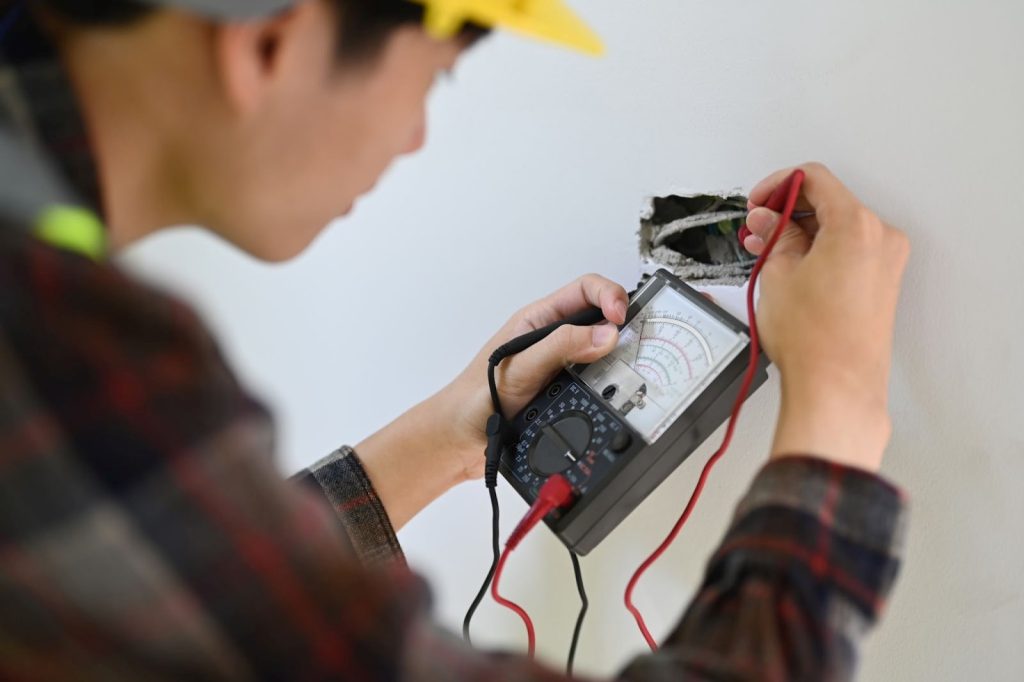If you’re a landlord or real estate agent, it is crucial to ensure that all the portable appliances on your rental property are safe. The best way to do this is through portable appliance testing or PAT testing. In this article, we explain everything you need to know about this subject.
What is a portable appliance?
In theory, any device that can be transported while being held in one hand or connected to an electrical system by a lead and plug is referred to as portable. More precisely, a portable appliance (PA) is defined as one with a mass of 18 kg or less and a voltage range of 50 to 415 volts.
Examples of PAs include:
- Appliances such as kettles, toasters, electric warmers, electric fans, microwaves, and vacuum cleaners.
- Drills and hair dryers.
- Wall heaters.
- Computer displays, laptops, printers, phones, and mobile phone chargers.
- Any movable electrical equipment that employees own and use at work.
However, some appliances that weigh more than 18 kg are also categorised as portable appliances. These include static equipment such as refrigerators, freezers, fax machines, photocopiers, vending machines, and dishwashing machines.
What is a PAT test certificate?
Why is it important to get your appliances tested?
One of the most significant benefits of hiring a PAT tester to evaluate your appliances is the reduction of potential risks. Furthermore, PAT testing shows that you conform to health and safety regulations.
Lessens the likelihood of an electrical accident
Over time, the performance of electrical appliances deteriorates, and any flaw in a plug or device could result in a fire. All electrical equipment should undergo annual testing, a formal visual inspection, and physical examination to help identify issues or breaks. This is not something to take lightly because portable electric devices that have signs of damage could potentially cause an electrical shock.
Helps you comply with safety laws
All businesses are required to adhere to the strict PAT Testing guidelines established by the Health and Safety at Work Act and the Electricity at Work Regulations. A routine check of every electrical item in a building shows insurance companies how seriously you take safety precautions. It also shows that you are willing to go to great lengths to avert disaster.
Extends the life of the appliances
Electrical appliances cost a lot of money to buy. If they break down regularly, you’ll have to buy new ones frequently, which will cost you a lot of money. You can, of course, avoid such needless expenditure by contacting professionals to perform PAT tests on all your electrical appliances.
What does the PAT testing procedure involve?
Portable appliance testing product standards are pretty simple according to the 1989 Electricity at Work Regulations. PAT testing employs a number of tests to identify irregularities in outlets or electrical appliances, such as:
- Earthly persistence
- Polarity of lead
- Insulation
Earthly persistence
A continuity test is essential to determine whether a circuit has damaged components or frayed wires. It also helps determine whether the soldering is adequate, whether the resistance is too high for electricity to pass, or whether the electrical wire has been damaged twice.
Polarity of lead
Electrical polarity (+ and -) controls the direction of current flow in an electrical circuit. The goal of the polarity test is to confirm that all single-pole electrical devices, such as switches, circuit breakers, and fuses, are connected solely via the phase conductor.
Insulation
Through this test, the overall resistance between two electrically isolated sites is determined. The result determines how well the insulation of the electrical equipment performs. In other words, this test determines whether it is safe to come in contact with an electric item.
What needs to be PAT tested?
All equipment that is not a part of a fixed electrical installation, but is intended to be connected to one is referred to as a portable appliance for legal purposes. For practical purposes, a portable appliance is any device that has a flexible cord or plug and socket. An appliance qualifies to be PAT tested if it contains a plug that is meant to be connected to a wall socket.
Here are some examples of the types of equipment that qualify for PAT testing:
- Refrigerators
- Washing machines
- Tumble dryers
- Dishwashers
- Coolers
- Lamps
- TV’s
- Kettles
- Toasters
- Etc.
PAT testing for landlords: everything you should know
Does equipment that isn’t portable need PAT testing?
Yes, fixed appliances also need PAT testing. Despite not having a socket, these electrical devices draw power from the mains. Examples include built-in, hard-wired appliances like towel racks and storage heaters that are hooked into the walls.
Is there anything that doesn’t need PAT testing?
Yes, you do not need to test any electrical devices that are battery-operated, such as wireless keyboards and mice.
Does new equipment need PAT testing?
No, if you purchased your equipment from a reputable retailer, PAT testing is not immediately necessary. What matters is that the equipment you bought is safe so make sure to perform a visual check if you are unsure before using it. In fact, you should always conduct such a check, because it is possible that it was damaged during delivery or transit.
PAT testing regulations
According to the Electricity at Work Regulations of 1989, all electrical equipment with the potential to injure people must be kept in a safe state. The regulations, however, do not specify what must be done, by whom, or the frequency of inspections.
Is PAT testing a requirement under law for landlords?
Depending on the type of property, landlords may be required by law to perform PAT testing. The legal obligations of landlords may differ from municipality to municipality. However, if you are the owner of an HMO, you are required by law to do a yearly PAT test.
Legally, landlords must guarantee that all electrical equipment or appliances in their rental properties are secure for renters to use. The only electrical safety document that landlords are required to give to their tenants is a current EICR certificate.
How often is PAT testing required?
It is a legal requirement for landlords to perform a PAT test on their rental property whenever a new tenant comes in. Smaller PAT-tested appliances need to be inspected every two years after the initial PAT test, whereas bigger appliances like refrigerators and washing machines need to be tested every four years.
Every time there is a new occupier, a test should be performed because it can be challenging to remember all that happened during past leases. This makes it possible for the landlord to monitor the building’s electrical system and, if necessary, attribute any damage that is detected to the prior renter.
Every four years, Class 1 equipment (general IT equipment) should be tested. Portable items like extension cords should be evaluated every two years. Handheld and more regularly-used and transportable electrical equipment should be evaluated every 12 months due to the increased risk of damage.
PAT testing services
Professional PAT testers perform isolation, polarity, and conductivity tests. These checks ensure that your electrical appliances and property are both safe and sound electrically. PAT tests are performed by Legionella Risk and PAT throughout Scotland at affordable rates.
Our residential PAT testing services protect your family and tenants from dangerous, defective electrical equipment that can be hazardous. This package can test up to 10 items. If you need to test more products, you will be charged 50p for each extra item.
You may shield your company against risk, harm, and injuries brought on by electrical breakdowns thanks to our commercial PAT testing services. Starting at £79, prices include up to 30 items. Please contact us for a price, if you need to test more than 30 products.


